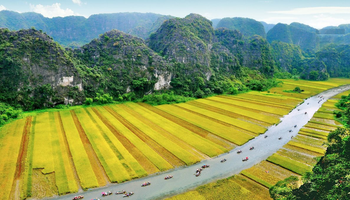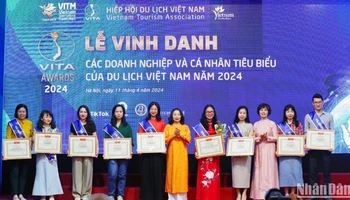After the Ho Dynasty Citadel in central Thanh Hoa province was recognised by UNESCO as a World Cultural Heritage site on June 27, 2011, many researchers and media drew attention to the site. The Citadel is located in a tourism complex that includes the Cam Luong fishing stream in the west, Lam Kinh historical-cultural relics in the south, and Sam Son beach in the east, in addition to other attractions. However, despite its convenience for traffic, there is no detailed tour programme or tourist products to attract visitors to this natural complex, which makes it difficult for tourists to find lodging. The provincial leaders are aware of the tourism potential but turning that potential into an attractive product is not so simple.
In contrast to the deserted atmosphere of the Ho Dynasty Citadel, the ancient town of Hoi An in the central province of Quang Nam is in danger of being overloaded. A survey conducted by Japan’s Showa Women's University shows that 453 of the 475 houses located on Hoi An’s four main roads are being used as shops. It also showed that 90.3% of the houses in the town are serving as tourist hotels, lodging houses, restaurants, and souvenir shops. In addition, 35.1% of the houses are for rent and 64% of the renters have no connection to the ancient town. These statistics were unveiled at a seminar on heritage conservation and tourism management in Hoi An held by the Quang Nam provincial People's Committee, the Japan International Cooperation Agency (JICA) and Japan’s Showa Women's University.
The tourism industry in the ancient town is developing, which has contributed to generating jobs for local people, however, there appears to be a trend where businesspeople are concerned only with achieving their short term goals and profits and then leave the town. Most of the houses in the town are now being used for business and not as residences, therefore Hoi An runs the risk of losing its tourism appeal.
Many national and international seminars on tourism are held every year, raising concerns about the increasing number of tourists and their impact on the landscape, lifestyle, quality of life and conservation of cultural heritage.
The combination of festivals and heritage has a constant, year round effect on people in provinces and cities. Whenever there is a festival, local authorities must address the issues of accommodation and security for visitors, which seem to be obvious factors, but there is a lack of synchronous co-ordination between the tourism and cultural sectors in regards to tourism sites.
RoK cinematographers have recently introduced their experiences in film making and tourism to Vietnamese cinema managers and others involved in the country’s culture-tourism industry. The RoK now has nine cinema committees, each one dealing with one aspect of film making such as film studios, equipment, support services, etc. They are in charge of arranging human resources, accommodation, food and other services in the location of the filming and promoting the filming as a cultural and tourism attraction that will benefit the locality.
For example, after the soap opera 'Autumn Heart' was broadcast, Nami Island in the RoK where the film was shot became a popular tourist destination attracting hundreds of thousands of visitors each year, including nearly 30,000 foreigners.
This would be a good model for Vietnam to follow because the country has many extraordinary natural attractions such as Ha Long Bay and the beaches of Nha Trang, as well as many heritage and relic sites. But the most important thing required is close co-ordination between the culture and tourism sectors to devise an effective model for promoting sustainable tourism.
















